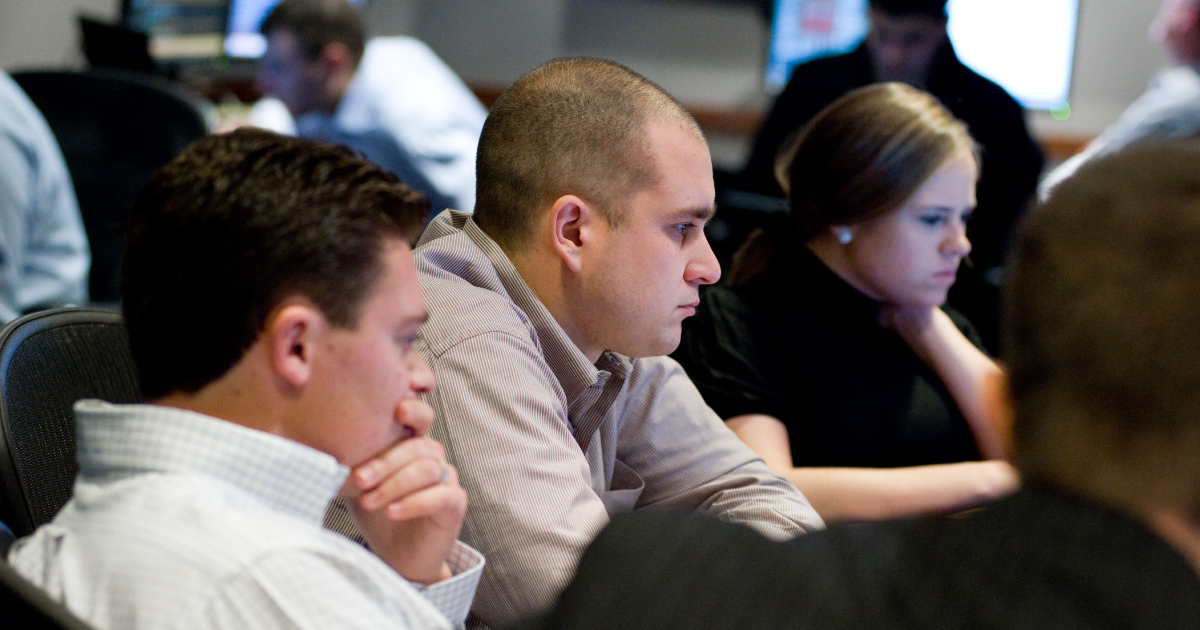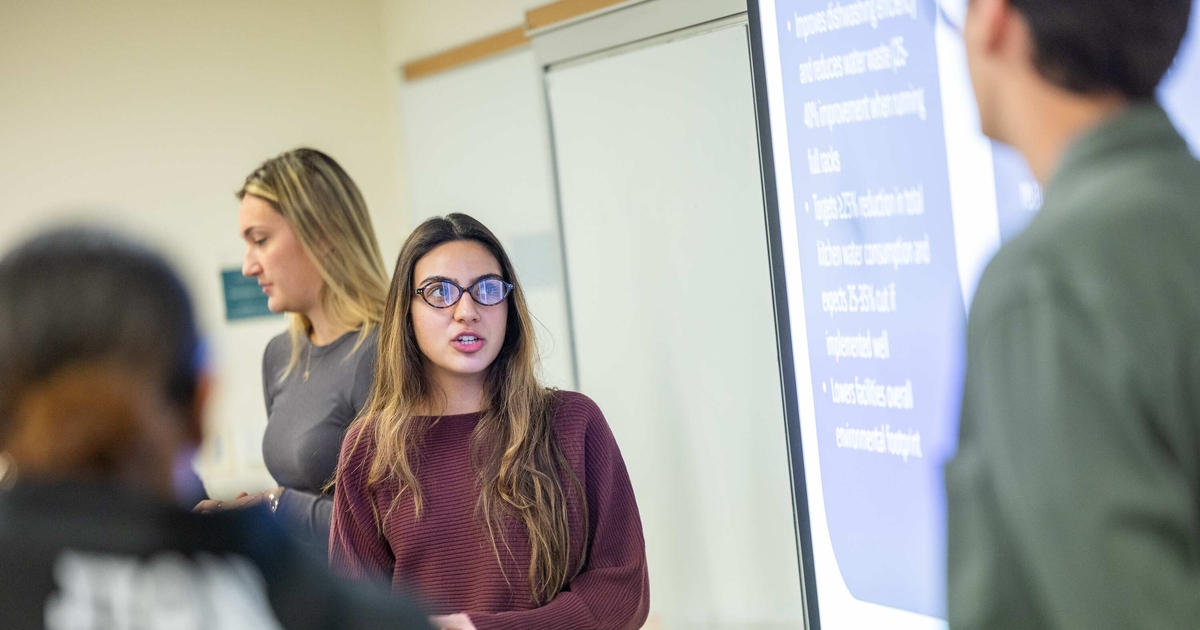Show Me the Money

Hot investment tip: I know a stock fund that has beaten the S&P 500 consistently for 20 years. It pursues a rigorous fundamental research process, and is advised by some of the best names in the business. Its managers, who turn over every year, work out of a state-of-the-art investment lab in a quiet, wealthy Boston suburb. Want in?
Too bad—you can’t invest with the fund, and neither can I. In fact, the fund has only one client, and it’s not even a person. The sole client in the Babson College Fund (BCF) is . . . Babson College.
The Trustees of Babson College entrust a portion of the college’s endowment to 24 hand-picked student managers and their mentors. This is not play money; it’s the real thing.
In the heart of Babson’s Stephen D. Cutler Center for Investments and Finance, you’ll find a dark, glass-walled, room glowing in the light of dozens of workstations. Overhead, a ticker displays stock prices and other market data. CNBC anchors can be seen on a pair of LCDs. Students pore over data from FactSet, Bloomberg, and Thomson-Reuters.
Contrasting this rush of real-time market data, one wall bears a time line of investment trends, fads, and bubbles on a Periodic Table of Investment Returns, showing annual returns of various investments from 1926 to 2018. A glance at the wall reminds visitors that European stocks soared 34.4 percent in 2007, and then fell 46.1 percent the following year. Another glance tells the history of gold investments, S&P 500 stocks, or U.S. Treasury bonds. The table is both addictive and cautionary, and under it the managers of the BCF grind through mountains of information, searching for undervalued stocks.
Tuesday Night Mashup: Babson College Fund Faculty and Advisors
Patrick Gregory, CFA and his team of 10 Executives in Residence meet Tuesday nights with the BCF student managers. The advisors are a group of analysts, portfolio managers, and chief investment officers who according to Gregory, have an average of 25 years of experience and manage tens of billions of dollars. Gregory, a former institutional portfolio manager, oversees the weekly meetings in which the students discuss portfolio positioning and recommend new stocks for the fund. The executives question, comment, and point out gaps in information or judgment.
“Although the class only meets once a week, students are expected to spend 10 to 20 hours outside of class researching companies, collaborating with their sector teams and maintaining a constant line of communication with their Executive in Residence,” says Gregory. “We are making decisions with incomplete information, which can be a bit overwhelming, but this is part of the real-world investing process.”
Scott Kern ’11 remembers the early pressure to perform. “My team couldn’t make a decision whether to buy shares of the restaurant company Panera. We did the quant—it was trading at a discount to peers but we were really worried—we were investing Babson’s money! We went to their stores, ate the food, took notes, talked to employees, and finally made a recommendation. It actually ended up being our best-performing stock of the year.”
With each successive pitch, the students improve on the skills that matter to investment firms. They learn to differentiate a good company from a good stock, to conduct a detailed fundamental analysis of a company, and to determine what’s a reasonable value for the company given its fundamentals. They also learn to identify—and profit from—inflection points in the market.
By the second semester, the pitch is better substantiated and the presentations are more polished. Tuesday night meetings move faster as investments are quickly assessed by the group. “It isn’t that the pressure lets up,” recalls Brad Weafer MBA’11. “If there’s a hole in your thesis or something wrong with your model, Professor Gregory and the Executives in Residence are there to catch it and help you through it, and to make sure you don’t make that same mistake again.” Now, the chief investment officer at a wealth management firm in Boston, Weafer affirms the fidelity of the BCF. “I can tell you from professional experience, I had just as much if not more resources at Babson.”
Real pressure, real expertise, real money. For aspiring investment managers, it doesn’t get any more real.
During the month of February, you can help celebrate Babson’s Centennial year by making a gift to support The Cutler Center, or your favorite Center or Institute.
Posted in Community





